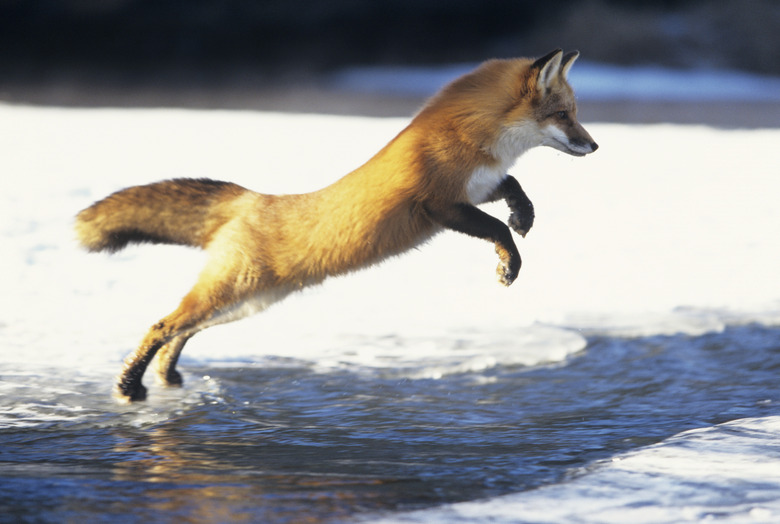Types Of Population Growth Models
A population growth model tries to predict the population of an organism that reproduces according to fixed rules. Depending on how many times an organism reproduces, how many new organisms it produces each time and how often it reproduces, the model can predict what the population will be at a given time. For most populations, there are growth-limiting factors that reduce the theoretically possible population. These include limited resources, natural death rates and predators. Different types of population growth are subject to these constraints and require different types of population models to accurately predict what the population will be in the future.
Basic Population Growth Model: Exponential Growth
Basic Population Growth Model: Exponential Growth
Given enough food, water and other resources required for life, populations can increase exponentially without limit. Exponential growth is very rapid and living things take advantage of this capability when they can. For example, a yeast cell in a sugar solution will divide to form two cells which then divide to produce four, then eight, 16, 32, 64 and so on. The exponential curve rises even more rapidly when animals such as rabbits have several young instead of just two. These types of growth curves are seen for only short periods in real life because natural limiting factors impact the rate of growth to slow it down. As long as exponential growth is in effect, the populations that experience it increase or become more dense regardless of the number already included in the population.
How Limiting Factors Reduce Population Growth
How Limiting Factors Reduce Population Growth
Populations do not usually grow in an unlimited way because natural limiting factors stop the population increase. Two limiting factors are lack of resources and mortality. If organisms can't find enough of the resources they need to grow and reproduce, they will have fewer or no young and the rate of population growth goes down. If many in the population die due to predators or disease, population growth is also reduced. If lack of resources such as food or water causes a high mortality rate, it also limits growth, but the mechanism in this case is different from a lack of food simply leading to fewer births. Limiting factors have the greatest effect on large populations that have grown rapidly.
Exponential Growth with Limiting Factors Results in Logistic Growth
Exponential Growth with Limiting Factors Results in Logistic Growth
The logistic growth model combines exponential growth with the limiting factors that operate for a particular population. For example, the yeast cells in a sugar solution multiply to produce exponential growth but their limiting factor can be lack of food. Once the sugar is eaten, the yeast cells can't grow and multiply. For some yeast populations, a second limiting factor is the alcohol they produce. If there is a lot of sugar in the solution, there will not be a lack of food but the alcohol produced by the yeast cells will eventually kill them off and reduce the population.
As a result of limiting factors, logistic growth starts off as exponential growth when a population is small and has lots of food and water. As the population grows, the limiting factors start to slow down the growth, as food is harder to find. Finally, logistic growth predicts a steady state in which there is just enough food and water to keep a population at a steady level.
Population Growth Can Be Chaotic Rather Than Logistic
Population Growth Can Be Chaotic Rather Than Logistic
Logistic growth is based on a gradual population increase to the natural limits of the population. A weakness in this population growth model is that growth can be so rapid that the population overshoots the natural limit. For example, rabbits that have a large supply of grass and water tend to have large litters very frequently and their population can grow to far exceed the food supply. In this case the rabbits eat all the food and then starve. The population drops to close to zero but a few rabbits survive. The grass grows back and the cycle repeats itself in a chaotic, unpredictable manner. In real life situations, both logistic and chaotic population growth models are possible but the exponential growth model only ever applies for short periods.
Cite This Article
MLA
Markgraf, Bert. "Types Of Population Growth Models" sciencing.com, https://www.sciencing.com/types-population-growth-models-8269379/. 13 August 2018.
APA
Markgraf, Bert. (2018, August 13). Types Of Population Growth Models. sciencing.com. Retrieved from https://www.sciencing.com/types-population-growth-models-8269379/
Chicago
Markgraf, Bert. Types Of Population Growth Models last modified March 24, 2022. https://www.sciencing.com/types-population-growth-models-8269379/
